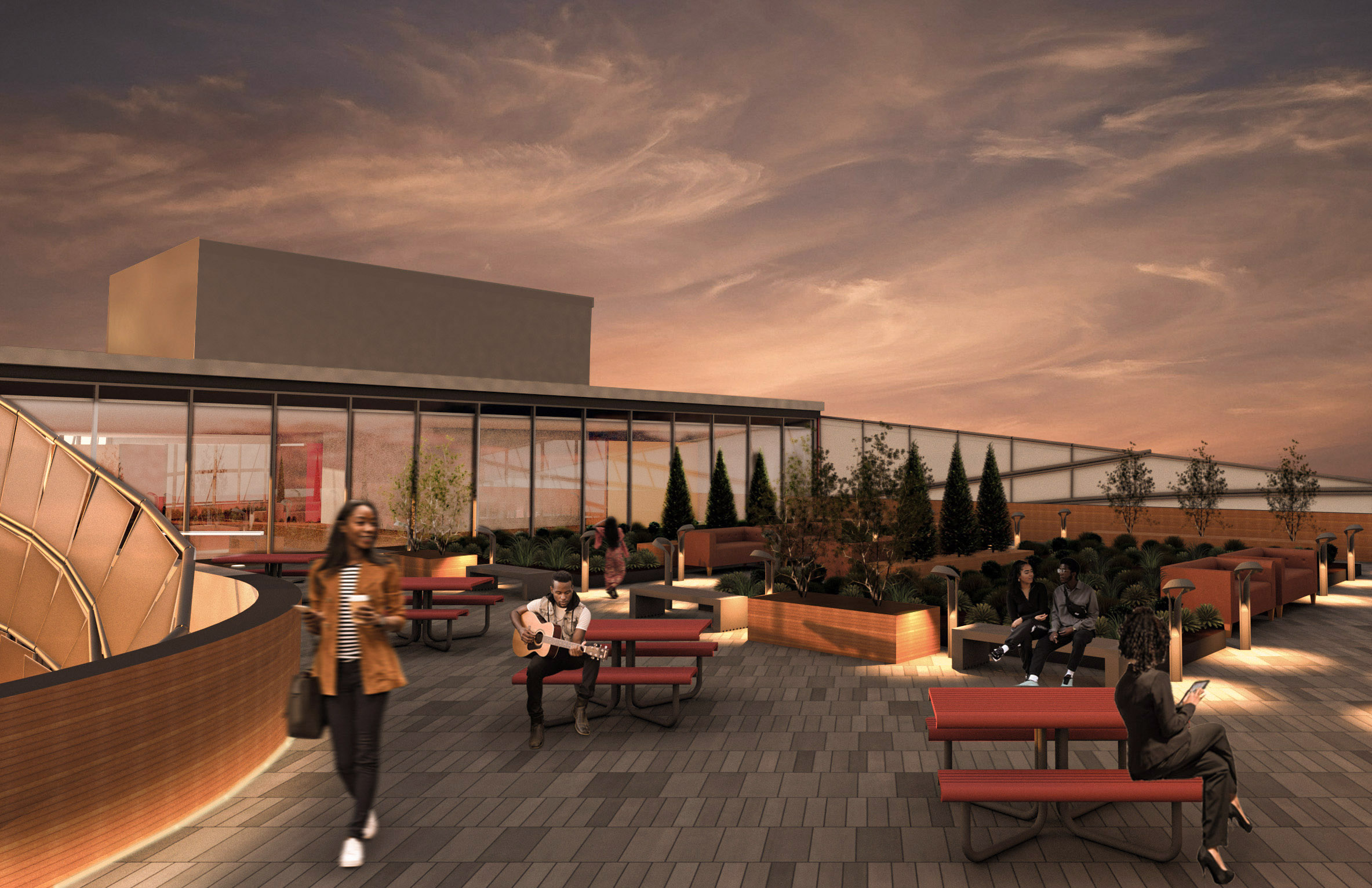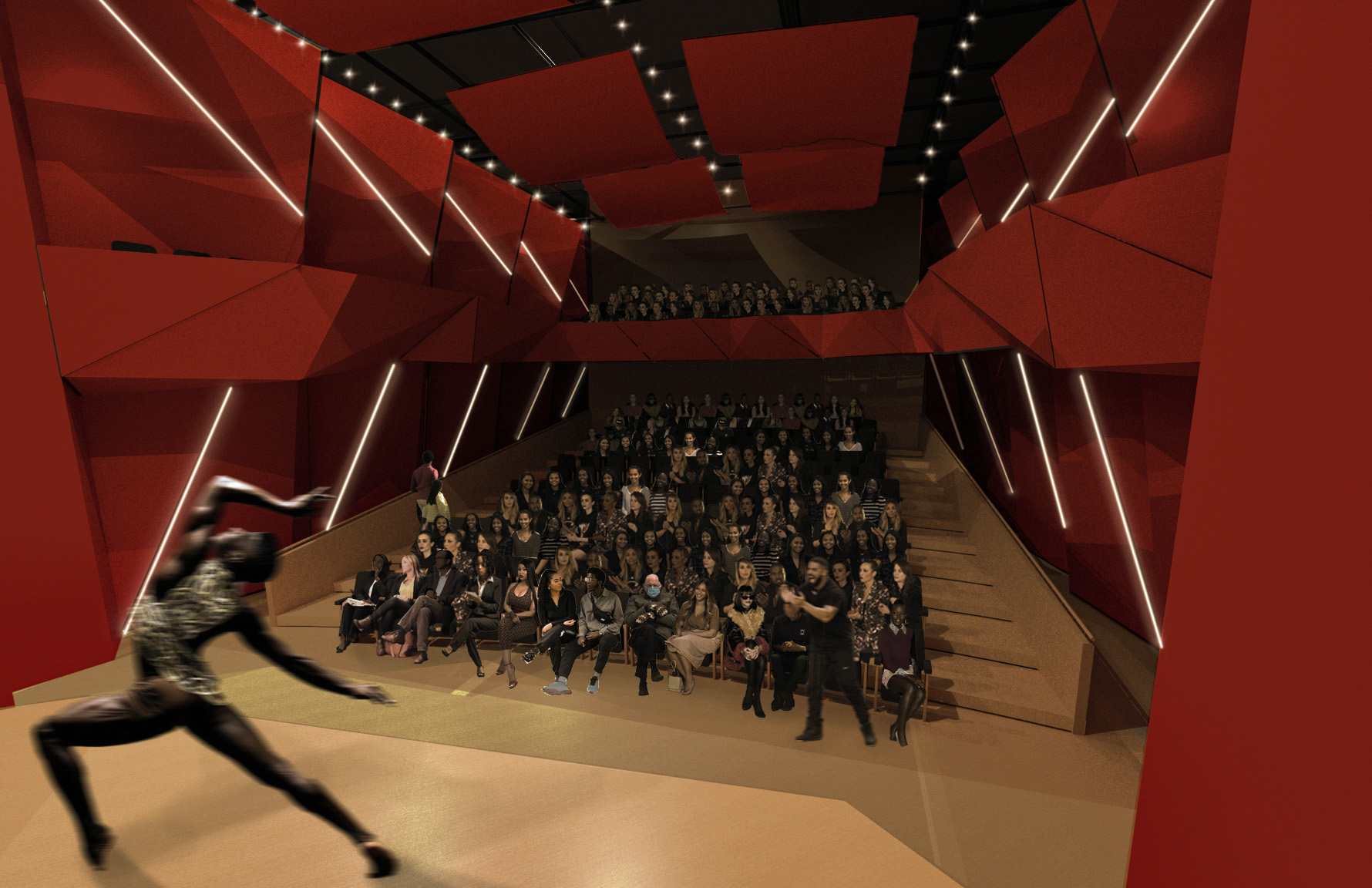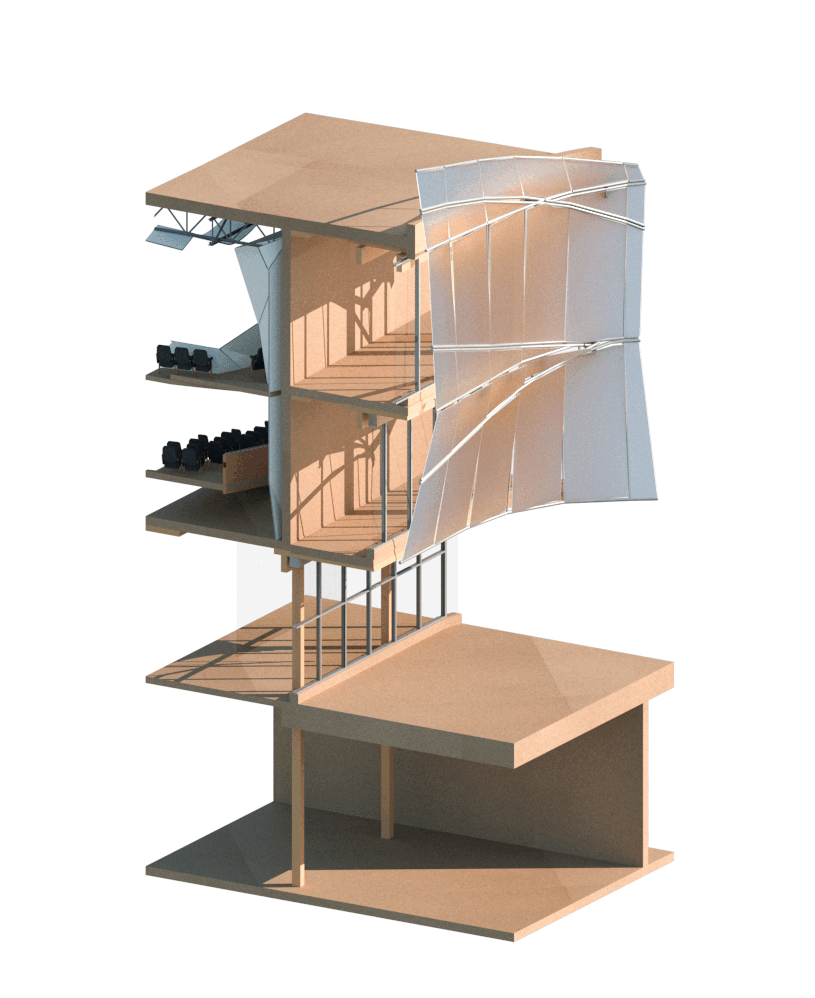UNDERGRADUATE
Adneth Marie Kaze—Montgomery Sisam Architects Inc. Award![]()
Adneth Marie Kaze—Montgomery Sisam Architects Inc. Award

About the Award
This award is intended for students who identify as BIPOC who are enrolled in any year of study in the undergraduate architectural science program, and who addresses the role of architecture in creating and promoting equitable and diverse communities.
Historically, all racialized social processes have been reflected in the built environment. Architecture has been used to segregate, isolate, and gentrify communities. Our landscapes are spatial manifestations of structural inequalities that are noticeable in housing, healthcare, and education. I myself was born in a refugee camp in Tanzania, following the genocide in Rwanda and Burundi. At that time, I experienced the direct impacts of the built environment in reinforcing a sense of unsafety and insecurity. While the notion of a “safe space” is understandably foreign in such a setting, why does it continue to lack presence in our current landscapes? Within Canada, Indigenous communities remain one of the most marginalized, their mobility and by extension influence, is restricted by the built environment. This leads to only a small percentage of spaces in which members of the community feel safe and accepted.
What can we do? It is fundamental to incorporate affected communities’ voices into the design approach. This is a process that starts within academia as a means through which change can permeate the professional world. Diversification of curriculum, educators and increased accessibility to the program for marginalized individuals are all ways to accomplish this. However, change can also start now. I believe every architect needs to consider the socioeconomic ramifications of their project. It is our responsibility to embrace alternative ways of thinking, consider others’ experiences, and use our agency to benefit diverse communities. Powerful architecture should create a sense of comfort and safety for all.
This award is intended for students who identify as BIPOC who are enrolled in any year of study in the undergraduate architectural science program, and who addresses the role of architecture in creating and promoting equitable and diverse communities.
Historically, all racialized social processes have been reflected in the built environment. Architecture has been used to segregate, isolate, and gentrify communities. Our landscapes are spatial manifestations of structural inequalities that are noticeable in housing, healthcare, and education. I myself was born in a refugee camp in Tanzania, following the genocide in Rwanda and Burundi. At that time, I experienced the direct impacts of the built environment in reinforcing a sense of unsafety and insecurity. While the notion of a “safe space” is understandably foreign in such a setting, why does it continue to lack presence in our current landscapes? Within Canada, Indigenous communities remain one of the most marginalized, their mobility and by extension influence, is restricted by the built environment. This leads to only a small percentage of spaces in which members of the community feel safe and accepted.
What can we do? It is fundamental to incorporate affected communities’ voices into the design approach. This is a process that starts within academia as a means through which change can permeate the professional world. Diversification of curriculum, educators and increased accessibility to the program for marginalized individuals are all ways to accomplish this. However, change can also start now. I believe every architect needs to consider the socioeconomic ramifications of their project. It is our responsibility to embrace alternative ways of thinking, consider others’ experiences, and use our agency to benefit diverse communities. Powerful architecture should create a sense of comfort and safety for all.





